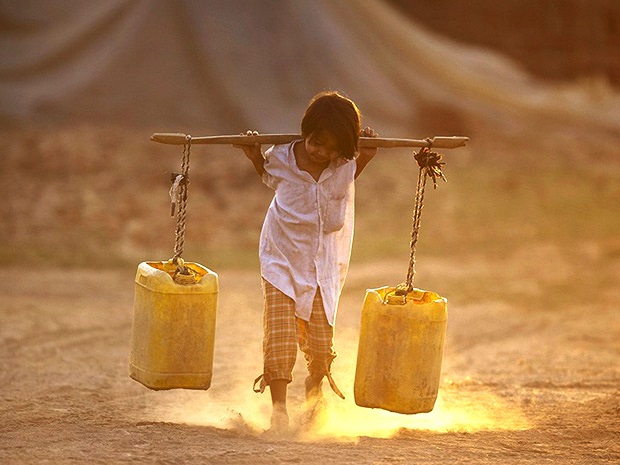Chennai is parched dry but it’s too far. “Mann ki Baat”draws many a listener but you and I aren’t one of them. We even don’t know that President Ram Nath Kovind referred to water crisis in his address to the joint session of Parliament last month. Could you please stop shedding tears on water, please.
Let’s get a little closer to the truth. Say Jaipur. Part of the city ran out of water last year. It was because Bisalpur dam, the supplier of water to Jaipur, almost dried up. Imagine coolers–many times more than A/Cs—without water in the searing heat of the desert. Or supply of water restricted to an hour. A decade ago, five farmers who were protesting the diversion of water to Jaipur, were shot in Bisalpur.
Still far? Closer to any of these cities such as Pune, Nagpur or Mumbai? Click the links and you would know how close you were to use only toilet papers in the morning. Ever wondered why you see hundreds of water tankers darting to and fro in the Capital in summer? Or why violent clashes for waters among neighbours is so common? Delhi Police counted for three dead and many injured from last year. Cities like Delhi, Bangalore and Chennai already ferry water as far as 200kms from their outskirts.
Still unconvinced? Niti Aayog has warned that India faces the worst long-term water crisis in its history. Millions of lives and livelihoods are at risk. Outbreak of water-borne diseases would swamp our hospitals. Burial grounds would be humming like fairs.
Ever thought that water could be the reason why our farmers commit suicide? Do you know that India uses more groundwater than collectively used by China and the United States? Or how much of our surface/groundwater is used up by multinationals such as Coca-Cola?
Let’s see if these facts make any difference to you: In most Indian cities, the difference in demand-supply is a yawning 70%. Imagine what happens when 500 million more people join our cities by 2025.
Ok, let these facts below sink in:
- Water tariffs are lowest in India’s urban centres. In cities like Delhi and Mumbai, water is supplied at Rs 0.5 and Rs 1.6 per cubic metre. However, marginal poor in cities of India—some 170 million—end up paying to water tankers etc through their nose. It’s up to 20 times to what the rich pay and that too from unreliable sources.
- Almost 80 per cent of the water leaves cities as a waste of which less than 20 per cent is treated. The rest pollutes rivers, lakes and groundwater. Meanwhile, the government subsidy for water keeps accumulating at over a billion dollars a year. That’s a double whammy for poor. One, they don’t get water. Two, what they get is literally the untreated sewage flushed down by the rich.
- 82 per cent of our villages rely on groundwater for domestic use. Now, this groundwater is being extracted by water tanker economy which in six big cities itself is worth over Rs 100 crores. Then there are packaged-water companies; the soft drinks multinationals to suck it dry. For instance, there is a long-standing conflict between Coke and the Placimada village panchayat. Groundwater legislation in states such as Rajasthan, Maharashtra, Orissa and Himachal Pradesh actually work against villagers’ access to groundwater. Over-extraction has left to “well-fields” around Indian cities.
- Given the situation, the surface water would have to contribute no less than 65% of our total water requirement in decades ahead. This requirement is just not for residences. Your electricity supply and industries need water too. But where are the ponds and tanks? Marginal rivers have run dry due to encroachments by building mafia and conniving municipal administration. And have I forgotten the polluted major rivers?
- On paper, mega cities like Delhi and Mumbai receive almost enough water today. But that’s on paper only. No account is made of leakage, faulty engineering and poor maintenance. Mumbai hardly harvests its water. Governments as usual wake up late. For example in Gurgaon, a major water supply network was only built 20 years after all those high-rise buildings had come up.
- All this will leave a huge burden on our farms to produce enough food to meet demands by 2050. Since our cities take in a lot of cereals, our food output may have to rise 50% over present levels. Farmers are thus encouraged to grow crops that result in improved profits. But to grow rice and wheat, the water supply is grossly insufficient. According to an estimate, a whopping investment of Rs 560,000 crores would be required for irrigation networks in the next three decades.
Just imagine the scenario. Protests, riots, torching and bloodshed in our cities. Wildlife near extinction. So the likely fate of vegetation and rivers itself.
The irony is, India is one of the wettest countries in the world. Between Cherrapunji’s 11,000mm and Jaisalmer’s 200mm, India averages 1170mm of annual precipitation. Just half a century ago, India was acknowledged as a water-rich nation. Now several regions have turned into deserts.
So if you are moved to do your bit on water, read these two pieces. Both stress on water-harvesting. The first one deals with how lack of it has brought Chennai to its knees. The second one is a few noteworthy examples which could show you the light.
Do your bit and we could raise a glass to it! And don’t you tell me you don’t love your kids.


